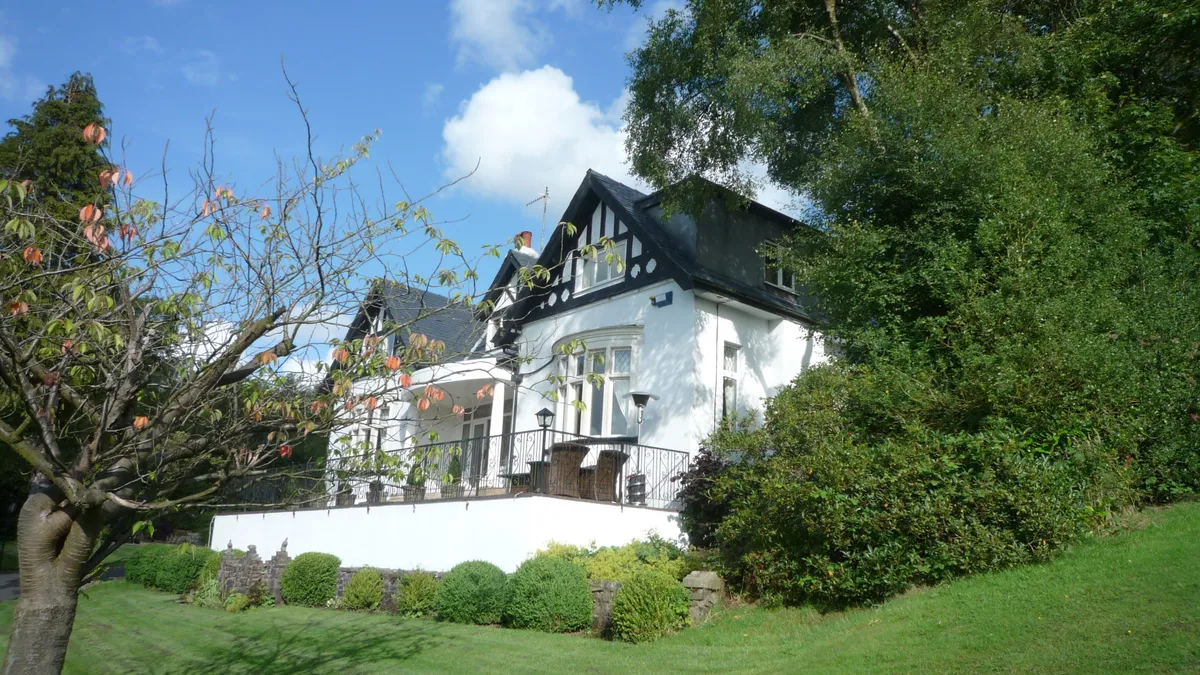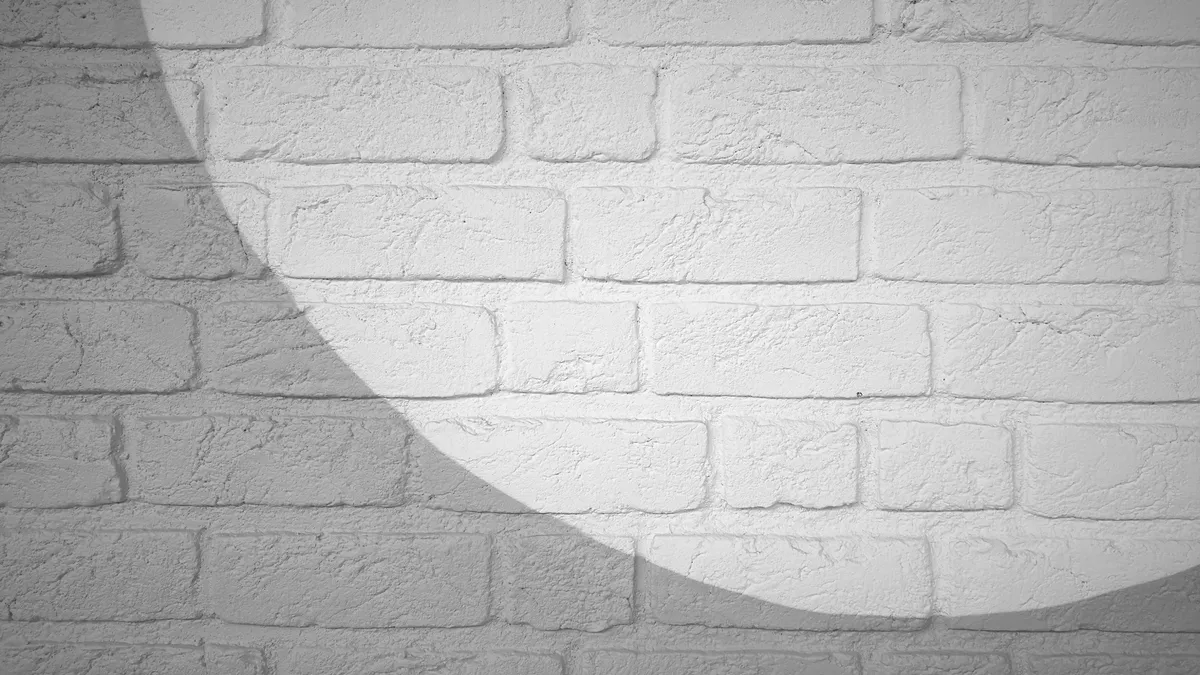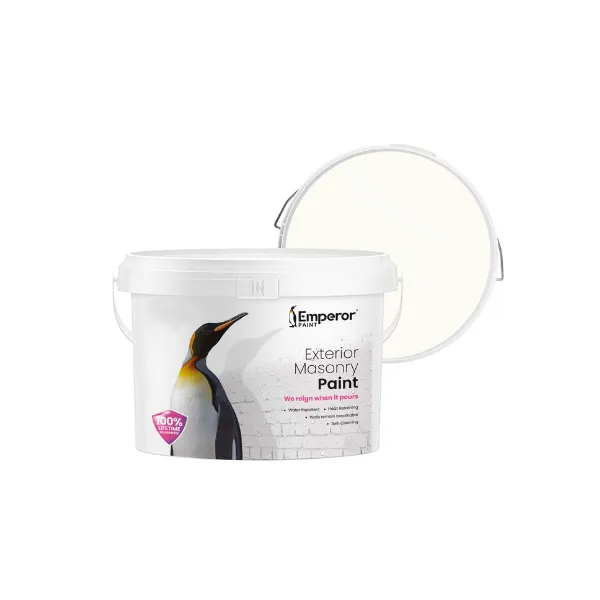Painting Exterior Walls
When the weather brightens up, one of the first jobs on many peoples to-do-list is brighten up their exterior walls. That is why our experts have put together this handy guide to painting exterior walls, so you can find all the information you need to get started in one place!

What Paint Do You Use On Exterior Walls?
When painting any surface, it is crucial to use a suitable paint. Masonry paint is a paint that is specifically designed to be applied & to perform on exterior walls. They can be applied to any exterior walled surface including brick, stone & render, offering protection against the weathering that exterior walls must endure.
Masonry paint comes in two textures; smooth masonry paint & textured masonry paint. Textured masonry paint is a masonry paint that builds a rough texture on exterior walls that is ideal for covering any blemishes or cracks. The most common choice of masonry paint these days is a smooth masonry paint which gives a modern finish to your exterior walls.
As well as texture, there are a number of different masonry paint formulations to choose from. Whether you want a cheaper option to complete a small garden wall or you want a highly durable paint to waterproof your home, there are plenty of formulations to choose from.
Acrylic Masonry Paint
The most common type of masonry paint available in the UK, acrylic masonry paints contain an acrylic binder to provide weather protection. These paints are not waterproof, meaning they can be more susceptible to peeling than more advanced formulations, however they are cheaper to manufacture meaning they can offer a low cost option if you are planning to change colours regularly.
Silicone Masonry Paint
Silicone masonry paint is a technologically advanced masonry paint that contains silicone-resins within its formulation. The silicone gives the masonry paint water repellent properties meaning it will prevent water from absorbing into exterior walls. This, in combination with the high breathability allows it to effectively maintain a dry substrate, which is why silicone masonry paint often comes with a 25+ year lifespan.
Limewash
Limewash is a traditional form of masonry coating that is highly breathable, commonly used on heritage buildings. While a natural form of masonry paint, it has been overtaken by more modern technology, which is why silicone masonry paint has replaced limewash as the go-to masonry paint for heritage buildings.
Oil-Based Masonry Paint
Oil-based masonry paint, otherwise known as pliolite, is solely used when temperatures are below 5 degrees. Due to its low breathability it is not recommended for use unless in specific commercial projects.
Why Paint Exterior Walls?
There are a number of reasons why you may decide to paint your exterior walls:
1. A Change Of Colour
A change of colour can be a fantastic way to add kerb appeal to your home. The options in terms of colours are endless, meaning you can give your home a new look that will stand out from the crowd.
2. Discolouring
Some exterior walls are prone to discolouration, caused from water ingress. By providing your exterior walls with added protection, you can not only cover the previous discolouration but prevent it in the future.
3. Damage
When moisture causes exterior walls to crack, repairs must be made in order to prevent water from seeping into the crack and making it worse. When repairs are made, taking the time to repaint the full wall rather than just patch up the cracked area can leave you with a beautiful uniform finish.
The Best Paints For Exterior Walls
When deciding what masonry paint is best for you, it is important to consider what you want from your paint. Do you want a cheap paint that will allow you to change colours regularly or do you want a paint that will perform long-term, proving waterproof protection to your home? Here are our experts picks for the best paints for exterior walls:
1. Emperor Masonry Paint
When it comes to a highly advanced silicone masonry paint, look no further than Emperor Masonry Paint. The waterproof masonry paint creates a super hydrophobic surface on exterior walls that reduces water absorption by 96%. It does this while being highly breathable, allowing any moisture within a substrate to naturally breathe out.
This combination of water repellence & breathability gives Emperor Masonry Paint an unmatched durability, as moisture is the single biggest cause of paint failure. In independent testing, Emperor Masonry Paint showed no signs of deterioration in appearance or performance after 25 years of accelerated weathering, which is why Emperor Paint offer a lifetime guarantee.
While it is more expensive than other masonry paints on the market, the long-term value of using a paint that will not fail after a number of years far exceeds the saving you would make in the short-term by opting for a cheaper paint.
Pros:
- Super hydrophobic
- Highly breathable
- Self-cleaning
- Proven to keep painted walls up to 6°C warmer on average
- Can be mixed in hundreds of colours
- Prevents penetrating damp
Cons:
- Is more expensive than other masonry paints on the market
2. Armstead Masonry Paint
When it comes to a standard acrylic masonry paint we recommend Armstead Masonry Paint. This all-round masonry paint is perfect if you are looking for a trade-quality masonry paint that offers great value for money. While it does not offer the weather protection of a waterproof masonry paint like Emperor Masonry Paint, it still comes in a 15 year lifespan, plus it can be mixed in any colour you want.
Pros:
- Shower resistant
- 15 year lifespan
- Can be mixed in any colour
- Cheaper than other masonry paints
Cons:
- Does not offer waterproof weather protection
- Is not as high quality as alternatives in terms of finish & opacity
How To Paint Exterior Walls
Looking to paint your exterior walls? Follow our expert's step-by-step guide:
What You Will Need:
- Masonry paint
- Long-pile paint roller
- Paint tray or scuttle
- Paint brush
- Sandpaper
- Dust sheets
- Masking tape
- Exterior filler & filling knife (may be required)
- Scraper (may be required)
1. Preparation
Preparation is the single most important aspect of any decorating project. Without properly preparing a surface to be painted, you run the risk of achieving a below par finish or even worse, the paint not properly adhering to the surface.
Start by removing any loose paint from the wall to ensure it is sound. Any holes or cracks can be filled using an exterior filler & a filling knife. Make sure you remove any loose material from inside the crack or hole before filling, as this ensures a sound surface for the filler to bond to.
Once the surface is sound, you should then clean it thoroughly. Start by removing any large deposits of dirt using stiff brush or a hose pipe. Once this has been done, apply a fungicidal masonry cleaner such as Emperor Masonry Cleaner to the wall. This is designed to kill any fungal growth that if left could bloom underneath the paint film, causing it to peel & flake. Leave the cleaner on the exterior wall for two hours minimum. You do not need to clean this down after applying as you will be painting over the surface.
Finally, protect any surfaces that you do not want to paint by putting down a dust sheet on the floor & applying masking tape around windows, doors & other exterior trim.
2. Priming
Bare surfaces that have not previously been painted, such as brick, stone or render should be primed before painting. By applying a primer, you prevent the paint from absorbing into the wall, which results in a patchy finish. Primers can also help provide added adhesion, allowing the paint to perform more effectively long-term.
While it is recommended to apply a primer to bare surfaces, it is possible to apply a diluted coating on masonry paint as a priming layer, by adding 10% water to the paint in the first coat only. This is only recommended if the surface is completely sound.
With a standard masonry paint, you could you a universal primer such as Zinsser Bullseye 1-2-3.
3. Painting
Only once the exterior wall is clean, dry & sound, can you begin to apply the paint. Ensuring the surface is dry is crucial when applying masonry paint as any damp content within the wall can impact the adhesion of the paint. We recommend that you pick a dry weekend where you will have a chance to apply two full coats of paint without the risk of rain.
Begin by cutting in around the edges of the wall with a paint brush. Once this has been done, you can then use a long-pile roller to apply the first coat of paint to the rest of the wall. If you are painting a rough textured exterior wall such as pebbledash, the coverage of the paint you are using will be reduced. Check the manufacturers instructions for further advice on the coverage you want to achieve with the paint.
Allow your first coat of masonry paint to completely before applying a second coat. While most water-based masonry paints will be touch dry in 1-2 hours, the recoat time of the paint will be longer than this. A good quality masonry paint will often cover fully in two coats, however apply three coats if you do not achieve the desired finish.

Frequently Asked Questions
Q. Should you wash exterior walls before painting?
Yes, the cleaning of exterior walls before painting is crucial if you want to achieve attractive, long-lasting results. If you leave dirt & debris on the wall, the paint will struggle to adhere to the surface. Similarly, any green growth or fungus left on the wall can bloom, causing the paint film to burst after a matter of months. Ensure you thoroughly clean down the exterior wall off any dirt and apply a fungicidal cleaner before you paint.
Q. How much paint I need?
The amount of paint you will need depends on the paint you are using, the size of the area and the number of coats required.
Every paint manufacturer gives an estimated coverage of their paint on smooth & rough surfaces. Emperor Masonry Paint for example has a coverage of 5-6m2 per litre on smooth surfaces and 2-3m2 on rough surfaces.
In terms of the size of the exterior wall, this should be estimated on metres squared. Simply measure the length of the wall & the height of the wall, then multiply these together. This will give you a total metres squared figure.
Finally, a good quality masonry paint will cover in two coats, while cheaper options will require three. This is something to check before you decide on which paint to use!
As an example, if you have an area of 40m2 to paint & you opt for Emperor Masonry Paint, you will require roughly 16L of paint.
Q. What colour should I paint my exterior walls?
When it comes to painting exterior walls, there are a huge range of options. White is by far the most common colour in the UK at the moment, but neutrals like cream and beige are increasingly common. Alternatively, why not stand out from your neighbours and give your home a bright & beautiful pink, blue or green pastel shade?
We hope this has answered any questions you may have had regarding painting exterior walls. If you require any more help, just send an email to hello@paintersworld.co.uk and our expert team will be on hand to give you any advice you require. At Painters World we have a wide range of paints available, so no matter the job, we've got the right tools for you. We offer FREE next working day delivery on all orders over £50, so what are you waiting for?



Sign up now and be the first to know about exclusive offers, product updates, and announcements.






